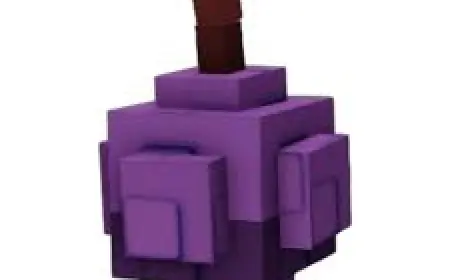Metal Parts Fabrication
Metal Parts Fabrication
Metal Parts Fabrication: Processes, Techniques, and Industry Applications
Metal parts fabrication is a critical discipline in modern manufacturing, forming the backbone of industries ranging from automotive and aerospace to construction and electronics. It involves transforming raw metal materials into precise components through a series of controlled processes. These fabricated parts are integral to machinery, infrastructure, tools, and consumer goods. As industries evolve, metal fabrication continues to adapt, embracing advanced technologies like automation, robotics, and additive manufacturing.
This article provides an in-depth exploration of metal parts fabrication, including its history, primary techniques, common materials, emerging technologies, and applications across various industries.
1. The Evolution of Metal Fabrication
Metalworking dates back thousands of years, with early humans shaping tools from copper and bronze. The Iron Age marked a significant leap, allowing stronger and more durable tools and structures. With the Industrial Revolution came mass production techniques, mechanized tools, and new methods such as welding and stamping.
In the 20th and 21st centuries, digital technology revolutionized metal fabrication. Computer numerical control (CNC) machines, laser cutting, and CAD (computer-aided design) allowed for high precision and repeatability. Today, Industry 4.0 concepts are integrating smart technologies and data analytics into the fabrication process.
2. Core Processes in Metal Parts Fabrication
Metal parts fabrication encompasses a wide range of processes, each chosen based on material properties, design complexity, volume, and cost. Below are the major categories:
2.1 Cutting
Cutting is often the first step in fabrication. It involves slicing raw metal sheets, rods, or bars into desired shapes.
-
Shearing: A mechanical process using straight blades for straight cuts.
-
Laser Cutting: Uses a high-powered laser for precise cuts with minimal waste.
-
Plasma Cutting: Ideal for thick metals; uses a high-velocity jet of ionized gas.
-
Waterjet Cutting: Employs high-pressure water mixed with abrasives; useful for heat-sensitive materials.
2.2 Forming
Forming changes the metal’s shape without removing material.
-
Bending: Performed with press brakes or rollers.
-
Stamping: Uses dies to press shapes into sheet metal; suitable for high-volume production.
-
Deep Drawing: Converts flat metal into deep, hollow shapes like cans or tanks.
2.3 Machining
Machining removes material to shape the part.
-
Milling: Rotating cutting tools remove material from a stationary workpiece.
-
Turning: A lathe rotates the part while a cutting tool removes material.
-
Drilling: Used to create holes.
-
Grinding: Provides fine finishes and tight tolerances.
2.4 Joining
Joining combines metal parts to create final assemblies.
-
Welding: Fuses parts using heat or pressure (MIG, TIG, and arc welding are common types).
-
Brazing and Soldering: Joins parts with a filler metal, typically at lower temperatures than welding.
-
Mechanical Fastening: Involves bolts, screws, or rivets; allows disassembly.
2.5 Finishing
Finishing enhances appearance, corrosion resistance, or mechanical properties.
-
Polishing: Improves aesthetics.
-
Painting and Powder Coating: Adds protective and decorative layers.
-
Anodizing and Plating: Increases corrosion resistance and hardness.
3. Materials Used in Metal Fabrication
Different applications require different metals, each offering unique characteristics:
-
Steel: Strong, durable, and widely used; includes carbon steel, stainless steel, and alloy steel.
-
Aluminum: Lightweight and corrosion-resistant; ideal for aerospace and transportation.
-
Copper: Excellent electrical conductivity; used in electrical components.
-
Brass and Bronze: Corrosion-resistant and aesthetically pleasing; often used in decorative and marine applications.
-
Titanium: Strong, lightweight, and corrosion-resistant; used in aerospace and medical devices.
4. Advanced Fabrication Technologies
4.1 CNC Machining
Computer numerical control (CNC) machines revolutionize precision machining. Programs guide tools to cut and shape metals with minimal human intervention, improving accuracy, repeatability, and efficiency.
4.2 3D Metal Printing (Additive Manufacturing)
Additive manufacturing builds parts layer by layer using metal powders and lasers or electron beams. This method is ideal for complex geometries and rapid prototyping.
4.3 Robotics and Automation
Robotic arms perform welding, assembly, and material handling with high speed and precision. Automation reduces labor costs and improves safety in fabrication plants.
4.4 IoT and Smart Fabrication
Sensors and data analytics monitor equipment health, predict maintenance needs, and optimize workflow, enhancing productivity and reducing downtime.
5. Quality Control in Metal Fabrication
Maintaining high quality is essential in metal fabrication. Common quality assurance practices include:
-
Dimensional inspection using calipers, micrometers, and CMMs (coordinate measuring machines).
-
Non-destructive testing (NDT) like X-ray, ultrasonic, and dye penetrant tests.
-
Destructive testing for evaluating welds or material strength.
Certifications like ISO 9001, AS9100 (for aerospace), and AWS (for welding) help ensure quality standards.
6. Applications of Fabricated Metal Parts
Metal parts fabrication serves a vast range of industries:
-
Automotive: Chassis, engine components, exhaust systems, brackets.
-
Aerospace: Fuselage parts, landing gear, interior frames.
-
Construction: Structural beams, staircases, frames, roofing.
-
Electronics: Enclosures, brackets, heat sinks.
-
Medical: Surgical instruments, prosthetics, diagnostic equipment.
-
Agriculture and Mining: Equipment, tools, frames, conveyors.
7. Challenges and Future Trends
Challenges
-
Rising raw material costs
-
Skilled labor shortages
-
Environmental regulations
-
Supply chain disruptions
Trends
-
Sustainable fabrication using recyclable materials and energy-efficient processes.
-
Mass customization enabled by digital design and flexible manufacturing.
-
Digital twins and AI for design optimization and predictive maintenance.
Conclusion
Metal parts fabrication is a cornerstone of industrial manufacturing, combining time-tested techniques with cutting-edge technologies. As demand for precision, efficiency, and customization grows, fabricators must innovate continuously. Whether crafting a complex aerospace bracket or a simple structural beam, fabrication is where ideas become tangible, functional components powering the modern world.
What's Your Reaction?
 Like
0
Like
0
 Dislike
0
Dislike
0
 Love
0
Love
0
 Funny
0
Funny
0
 Angry
0
Angry
0
 Sad
0
Sad
0
 Wow
0
Wow
0



















































